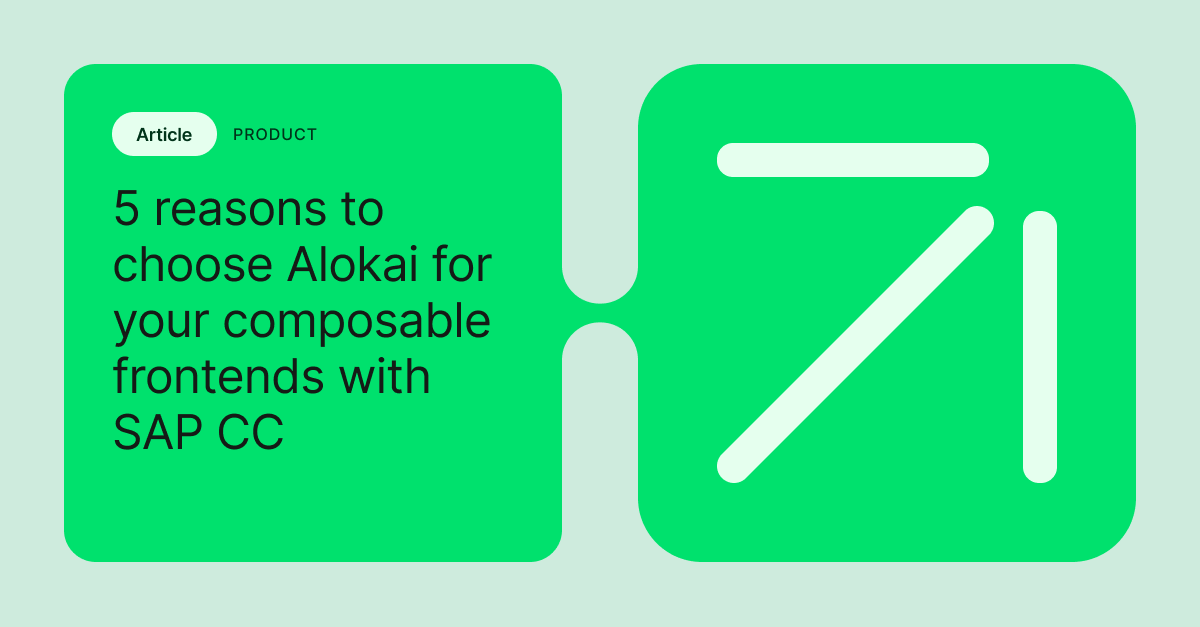Explore by Category:
eCommerce
Ecommerce storefront solutions for enterprise merchants
If you're an enterprise ecommerce store owner and you want to make the most out of your online business, you need the best ecommerce platform.
Yet, choosing from the myriad of ecommerce platforms for your operation can be a daunting task. There's a seemingly endless range of storefront solutions for an ecommerce business – and each of them claims to be the "best ecommerce platform."
Truth be told, the "best" solution is the one that suits youand your ecommerce store’s needs the most. To make the best choice for your online shop, you must first understand what key features you need, what each platform offers, and what specific areas of growth you want to prioritize.
Keep reading to find out more.
What is ecommerce storefront?
An ecommerce storefront is the user interface (virtual storefront) that allows a business to sell its products or services online. It is the digital equivalent of a brick-and-mortar store, providing customers with an online shopping experience.
Which is exactly what we'll be doing in this article: helping you navigate storefront solutions so you can turn your ecommerce website into a revenue-generating powerhouse.
For online stores, a storefront is not made of physical elements, but digital ones: a suite of tech tools meant to make the customer experience as streamlined and efficient as possible. These tools should be able to handle crucial tasks like product listings, order processing, inventory management, customer data tracking, etc.
Types of ecommerce storefronts
On the surface, most storefronts look the same. After all, they all do roughly the same thing: allow businesses to sell products and services online. However, there are several types of ecommerce storefronts that cater to different business needs:
Monolithic storefront
Monolithic ecommerce storefronts are all-in-one solutions that provide businesses with a complete suite of tools for managing their online sales. These storefronts usually include features such as website design, product listings, payment processing, and customer data tracking. And making a change to one aspect of your monolith storefront will most likely require to update the rest of the system.
Keep in mind that customers expect a fast-performing website. According to research, 80% of shoppers say a slow-loading website could turn them away from a store. And "slow-loading" is a pretty narrow term, as Google says most people expect their pages to load in 3 seconds or less. A tall order, especially when your store lives on a legacy system.
Add this to the fact that monoliths:
Are known for a slower time to market
Make maintenance very time-consuming (and thus, expensive)
Tend to be less optimized for user experience
Miss out on omnichannel, performance-driven marketing options
And it's easy to see why a monolithic storefront isn't exactly optimal for an online store (regardless of the size.) They’re not exactly the mean, lean, quick-and-cheap-to-build selling machines you’d expect.
Headless commerce storefronts
Headless commerce storefronts are more flexible and customizable compared to monoliths. They separate the frontend (the customer-facing interface) from the backend (the administrative tools). This allows businesses to have more control over the design and functionality of their online store.
A headless storefront works by using a content management system (CMS) or an ecommerce platform as its backend, while the frontend is developed using frontend frameworks like React, Angular, or Vue.
Pros of headless storefronts include:
High customization and flexibility
Ability to integrate with different third-party tools and services
Better control over the customer experience
SaaS platforms
Aside from monolithic and headless storefront options, there's also SaaS (Software as a Service) storefronts – a far less popular, yet still notable option for online shops. A SaaS storefront is a subscription-based model where businesses pay monthly or yearly fees to access an entire suite of ecommerce tools and services.
Pros of SaaS storefronts include:
No need for technical expertise, as the platform takes care of all the technical aspects
Automatic updates and maintenance
Scalable, which means they can (at least theoretically) be used by large enterprises too
Cons of SaaS storefronts include:
Limited customization options
Can be expensive for businesses with huge product catalogs or high transaction volumes
Feature | Monolithic ecommerce Storefronts | Headless ecommerce Storefronts | SaaS ecommerce Storefronts |
Overview | All-in-one solutions providing a complete suite of tools for online sales, including website design, product listings, payment processing, and customer data tracking. | Separates the frontend customer-facing interface from the backend administrative tools, offering more flexibility and customization. | Subscription-based model offering access to a suite of ecommerce tools and services without the need for technical expertise. |
Ideal for | Well-established enterprises with high budgets and dedicated tech teams. | Businesses searching for more flexibility in their ecommerce storefront setup. | Small and mid-sized businesses without technical expertise looking for a quick way to set up their storefront. |
Customization | Limited compared to headless options. | Highly customizable and flexible. | Limited customization options. |
Technical expertise required | High. | Medium for setup, low for day-to-day use. | Low. |
Setup and maintenance costs | Extremely costly in terms of time and resources dedicated to maintenance. | Cheaper than maintaining a monolithic solution in the long-term perspective. | Cost varies; can be expensive for businesses with large product catalogs or high transaction volumes. |
Speed and performance | Slower time to market and potentially less optimized user experience. | Allows for better performance optimization through flexibility in technology choices. | Depends on the provider, but generally good performance with automatic updates and maintenance. |
Market adaptability | Slower time to market for every new trend or channel, and less optimized for omnichannel, performance-driven marketing. | Great adaptability because it can integrate with various third-party tools and services with ease. | Scalable but may not be the best option for large enterprises with multi-region presence due to limited customization.. |
But what about specific platforms to help you build or scale your ecommerce store? You’ve come to the right place!
Top 9 ecommerce storefront solutions
If you're looking for an ecommerce storefront solution, there's an ocean of options out there. To make things a little less overwhelming, we've narrowed down the top 9 ecommerce storefront platforms for you to consider:
1. Shopify – Top choice for integrations and apps
( Source )
Shopify is so well-known it's almost synonymous with "ecommerce storefront". It's one of the best ecommerce platforms and it powers over a million online stores globally. What makes Shopify stand out is its vast selection of third-party integrations and apps that can enhance your store's functionality.
Pros of Shopify as an ecommerce storefront:
User-friendly and easy to set up
Offers a wide range of integrations and apps
Reliable and secure, with 99.99% uptime
Cons of Shopify as an ecommerce storefront
Can get expensive depending on the ecommerce features you need
Limited customization options for design and layout
Additional transaction fees for using third-party payment gateways
2. WooCommerce – Best for WordPress users
( Source )
If you're already familiar with WordPress, then WooCommerce might be a great option for you. Built specifically as a plugin for WordPress, it allows businesses to turn their regular website into an ecommerce storefront, with dedicated digital retail functionality embedded in it.
It's not a full, standalone ecommerce solution, for sure, but it can work for a variety of online business options (like, for example, starting an ecommerce store based on a content-driven business, like a membership site.)
Pros of WooCommerce as an ecommerce storefront
Easy to use if your website runs on WordPress
Highly customizable and flexible
Free to use as a basic store builder, with optional paid extensions for additional features
Cons of WooCommerce as an ecommerce storefront
Requires WordPress expertise to set up and maintain at a more advanced level
Can be expensive if you need extensions (and you will most likely need them as you grow)
3. BigCommerce – Top price/quality ratio
( Source )
BigCommerce is a popular ecommerce platform that offers both monolithic and headless storefront options. It's known for its powerful features and ability to handle high transaction volumes, making it a popular choice with large businesses.
Pros of BigCommerce as an ecommerce storefront
Robust features and ability to handle high traffic volumes
Offers both monolithic and headless options
Cost-effective for businesses with high transaction volumes
Cons of BigCommerce as an ecommerce storefront
Limited customization options for design and layout
Can be expensive compared to other options in the market (starts at $29/ month and goes above $299 for custom enterprise plans).
Adobe Commerce (Magento) – Best for enterprise stores
( Source )
For businesses with large product catalogs and high transaction volumes, Adobe Commerce (formerly known as Magento) is a top choice. Known for its scalability and enterprise-level features, it's a popular option for large online stores.
Pros of Adobe Commerce as an ecommerce storefront
Highly scalable and able to handle large product catalogs
Offers extensive customization options
Robust features for enterprise-level businesses (e.g. you can easily link tools to your online shop to run omnichannel campaigns, expand into new locations on the Globe, or sell to both businesses and consumers.)
Cons of Adobe Commerce as an ecommerce storefront
Requires technical expertise to set up and maintain
Can be expensive compared to other options in the market (quote-based).
SAP Cloud Commerce - Best for Advanced Stores
( Source )
SAP Cloud Commerce (known as Hybris for the on-premises solutions) is a popular option for B2B ecommerce storefronts. It offers advanced features such as personalized catalogs, pricing and payment options, and integration with other SAP products.
Pros of SAP Cloud Commerce as an ecommerce storefront
Designed specifically for advanced sales techniques (e.g., AI-assisted Intelligent Sales Services, which helps you promote the most relevant offers for your customers and for your business.)
Offers advanced customization options
Integrates with other SAP products
Cons of SAP Cloud Commerce as an ecommerce storefront
Expensive for small businesses or those with limited product catalogs (it can get as high as $100,000 per year, according to some)
Requires technical expertise to set up and maintain
Alokai offers a customized integration for existing customers of SAP CC >> Learn more!
Salesforce Commerce Cloud – Best for B2B stores
( Source )
Salesforce Commerce Cloud is a popular option for businesses looking to create customized B2B ecommerce storefronts. It offers robust features specifically designed for B2B sales, such as personalized pricing and complex product configurations.
Pros of Salesforce Commerce Cloud as an ecommerce storefront
Designed specifically for B2B sales
Offers advanced customization options
Integration with other Salesforce products like CRM and marketing automation
Cons of Salesforce Commerce Cloud as an ecommerce storefront
Expensive for small businesses or those with limited product catalogs
Requires technical expertise to set up and maintain
Alokai comes with a dedicated Salesforce CC integration >> Learn more!
Squarespace - Best for creative ecommerce stores
( Source )
If there's something Squarespace absolutely excels at, it's design. With its beautiful and modern templates, Squarespace is a popular choice for businesses looking to create an aesthetically pleasing storefront.
Pros of Squarespace as an ecommerce storefront
Beautiful and modern design templates
Easy to use for those with little technical expertise
Cons of Squarespace as an ecommerce storefront
Limited customization options compared to other options in the market
Limited integrations and third-party apps
Wix Stores – Best for beginners
( Source )
Wix is known for its user-friendly website builder, and their ecommerce storefront option, Wix Stores, follows suit. With easy drag-and-drop features, it's a popular choice for those new to building an online store.
Pros of Wix Stores as an ecommerce storefront
User-friendly and easy to use, even for beginners
Offers a variety of templates and customization options
Cons of Wix Stores as an ecommerce storefront
Limited features compared to other options in the market
Can get expensive depending on the plan and additional apps needed
What to consider when choosing an ecommerce storefront solution
Choosing the best ecommerce storefront for your business can be difficult, but there are a few key factors to consider to make this choice a bit easier for you:
Budget and cost: Different ecommerce platforms have varying pricing plans, so it's important to consider how much you're willing to spend on your storefront. For instance, SaaS ecommerce platforms tend to be relatively cheap compared to other solutions, while they also provide you with a variety of features, like web hosting and security.
Scalability: If you plan on growing your business in the future, it's important to choose a platform that can handle an increasing number of products and transactions. Look for options that offer scalability and support for high volumes. BigCommerce, Adobe Commerce, and Salesforce Commerce Cloud are known for their scalability.
Customization options: Depending on your business needs, you may want a highly customizable storefront. Platforms like WooCommerce, Adobe Commerce, and Squarespace offer extensive customization options. However, keep in mind that more customization often requires technical expertise or additional costs.
Ease of use: Consider the importance of a user-friendly interface, especially if you have limited technical skills. Wix Stores and Squarespace are known for their user-friendly interfaces, while other ecommerce platforms like Adobe Commerce may require more technical knowledge to set up and maintain.
Integrations: If you rely on other tools or systems for your business operations, it's important to choose a platform that integrates well with the other tools in your stack. For instance, Shopify, WooCommerce, and Squarespace have a wide range of integrations available.
Support: Depending on your technical skills, you may want to choose a platform that offers strong support through customer service or community forums. SaaS platforms such as Shopify and BigCommerce tend to offer more extensive support options compared to open-source ecommerce platforms like Magento.
Focus on these and opt in for the right ecommerce storefront solution for your business!
Share:
Share:
Frequently asked questions
More in Frontend
Ready to dive in? Schedule a demo
Get a live, personalised demo with one of our awesome product specialists.




















